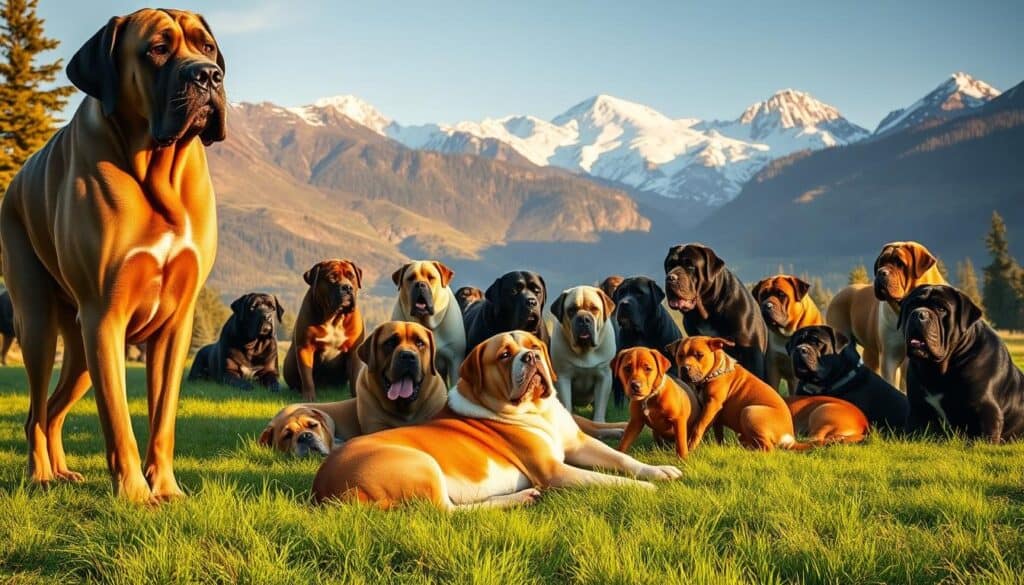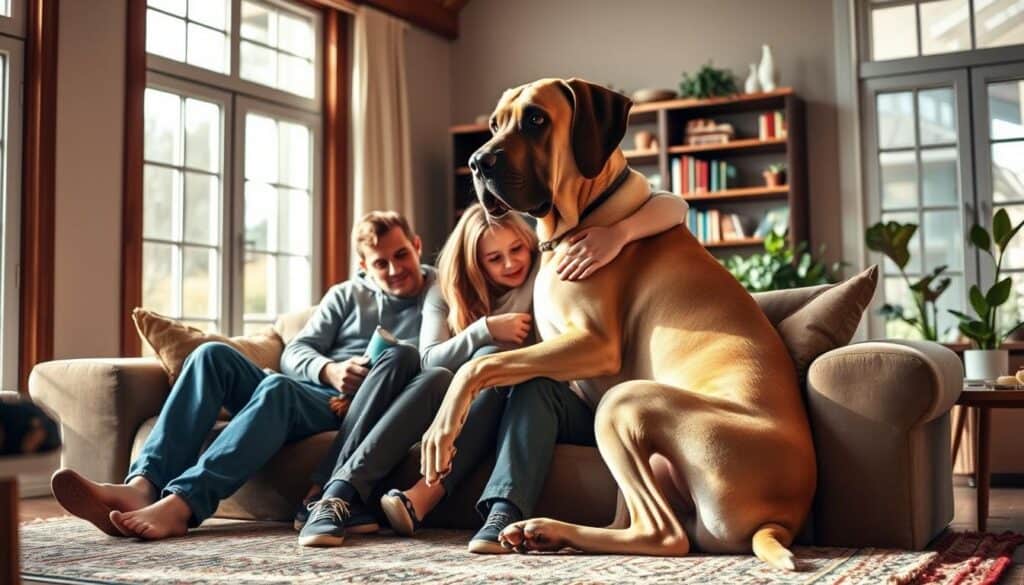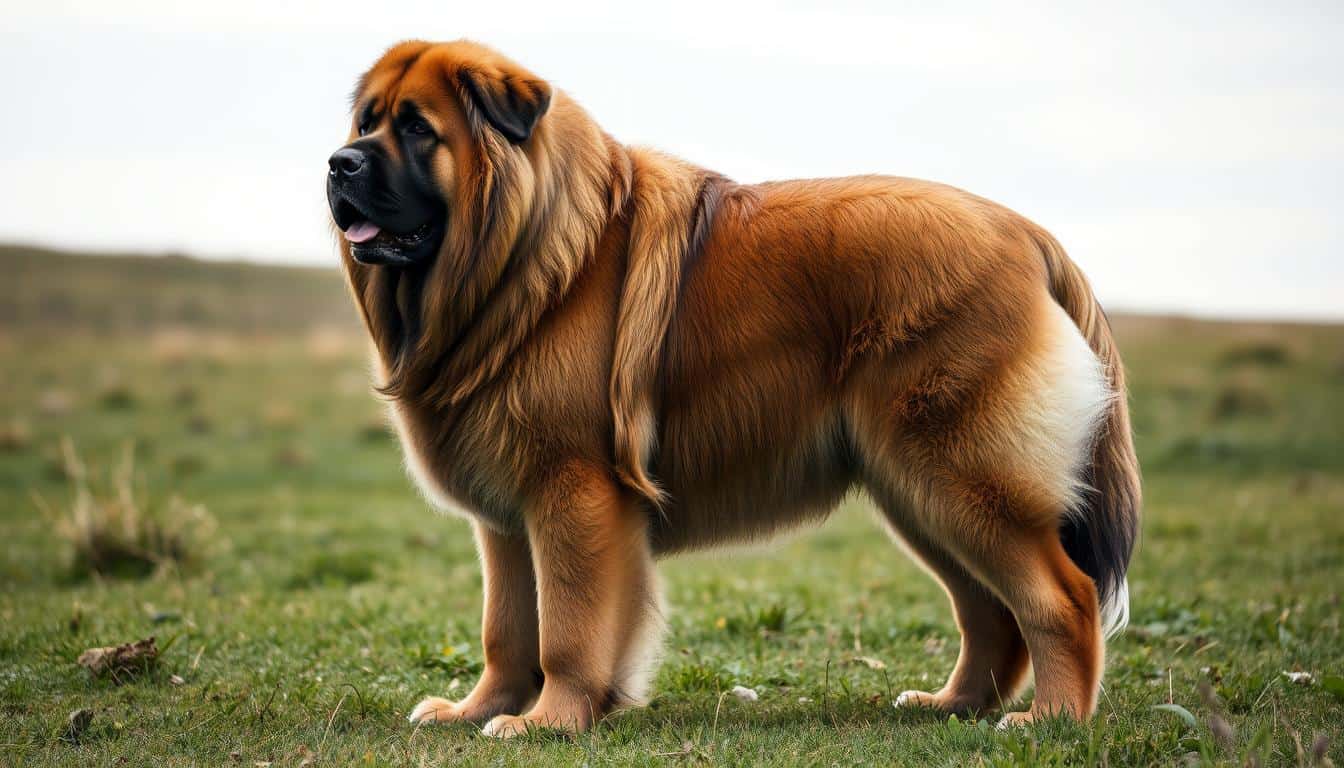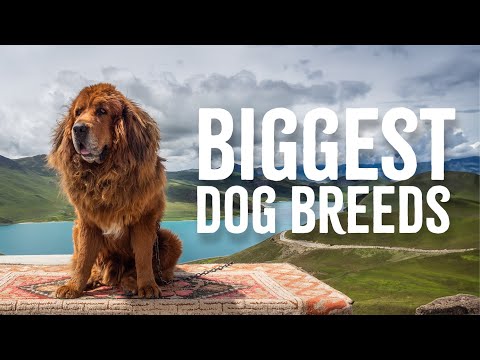Exploring the biggest dog breed is a fascinating journey. Size, weight, and height are key factors. The Great Dane and St. Bernard are often at the top of the list. These giant dogs are not just big; they also have unique personalities that make them great family pets.
This section will introduce you to the amazing qualities of these large dogs. It’s a journey into the world of giant canines.
Key Takeaways
- The biggest dog breed varies in definition based on size, weight, and height.
- Great Danes and St. Bernards are popular examples of large dog breeds.
- Physical stature of giant dog breeds can be impressive and captivating.
- Temperament plays a significant role in the popularity of large breeds.
- Understanding the characteristics of these breeds is essential for prospective owners.
The World of Large Dogs
Understanding dog breed sizes is key for owners and breeders. There are many sizes, from tiny to giant. Large dogs fall in the middle. What makes a dog large can vary by breed and breeder opinion.
Understanding Size Categories in Dog Breeds
Dog breeds are grouped by size: toy, small, medium, large, and giant. Large dogs weigh 50 to 100 pounds. Some breeds, like Great Danes, are much bigger.
This knowledge helps pick the right breed and know how to care for it.
The Importance of Size in Dog Breeding
In dog breeding, size is more than just a label. Breeders look at size for health, temperament, and family fit. Large dogs need more space, exercise, and food.
Giant breeds need even more care. The American Kennel Club supports breeding for size and health. This ensures these dogs are healthy and well-suited for families.
What is the biggest dog breed?
Finding the biggest dog is fascinating. It shows us the unique traits of the largest dog breeds. Size affects their bone structure, coat, and behavior. This helps us understand what it means to have a big dog as a pet.
Characteristics of the Largest Breeds
Large dogs are known for their strength and agility. They also have a calm nature, making them great family pets. Because of their size, they need to be well-trained and socialized. This ensures they behave well in different places.
Popular Examples of Large Dog Breeds
The Great Dane, Mastiff, Newfoundland, and Irish Wolfhound are among the largest breeds. The Great Dane is the tallest, reaching up to 32 inches. Mastiffs can weigh over 200 pounds.
Newfoundlands are known for their swimming skills and weigh around 150 pounds. The Irish Wolfhound is the tallest breed, standing 30 to 34 inches tall. They are known for their gentle nature. Each breed has its own charm and size.

Health Considerations for Giant Breeds
Keeping large dog breeds healthy means knowing about certain health issues they face. Giant dogs need careful watching because they can get sick in ways smaller dogs don’t. It’s important for owners to learn about common health problems and the need for early vet care.
Common Health Issues in Large Dogs
Big dogs often get hip dysplasia, heart disease, and bloat. Hip dysplasia can lead to arthritis, causing pain and trouble moving. Heart issues, like dilated cardiomyopathy, can happen as they get older, affecting their life quality. Bloat is very dangerous and needs quick vet help.
Knowing about these health problems is key for giant breed owners.
Importance of Regular Check-ups
Regular vet visits are essential for catching health issues early in large dogs. These visits help vets keep an eye on health changes, give shots, and suggest ways to prevent problems. Getting vet care for big dogs can help them live longer, healthier lives.
Caring for a Larger Dog
Looking after a big dog means focusing on their food and exercise. It’s important to know what giant breeds need to stay happy and healthy. Owners should watch their diet and activity levels closely.
Nutrition and Diet for Big Breeds
Big dogs need a balanced diet to grow and stay healthy. Choose high-quality dog food made for large breeds. It should have proteins, carbs, and fats, plus glucosamine and omega fatty acids for joint health.
Feeding them regularly and in the right amounts helps avoid obesity. This is a big problem for big dogs. Keeping their diet right is key to their long-term health.
Exercise Requirements for Large Dogs
Exercise for big dogs needs to match their size and energy. They need lots of activity to stay fit but must be careful with their joints. Regular walks, play, and mental games with toys are good.
Changing up their routine keeps them interested and stops boredom. Swimming or gentle hikes are also great. Owners should watch how much they exercise to keep them active but not too tired.

Adopting a Giant Dog
Thinking about adopting a large dog? It’s a big commitment. These dogs need lots of space, both inside and outside. Make sure your home can give them room to play and relax.
Adopting a giant dog is more than just getting a pet. It’s about being a responsible owner. They need special food and lots of exercise to stay healthy and happy. You’ll need to learn how to meet their needs.
Ready to adopt a giant dog? Start with local shelters or breed-specific rescues. They help find dogs in need of a home and offer advice on the breeds. By choosing wisely, you can have a great relationship with your dog for years.




